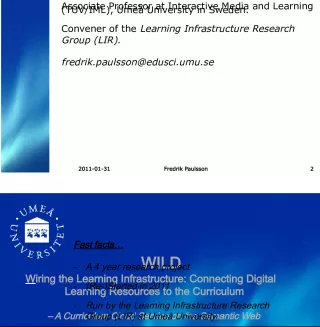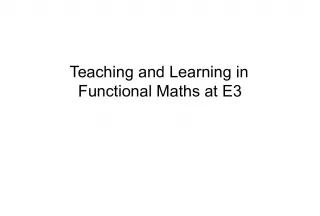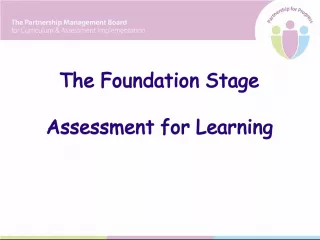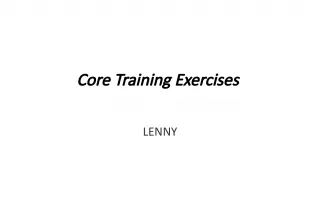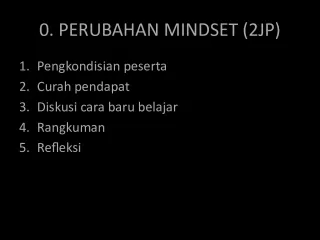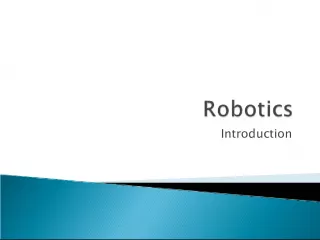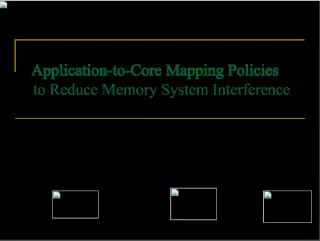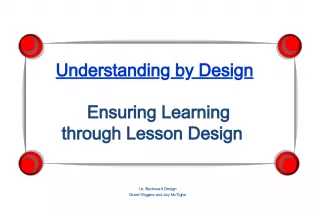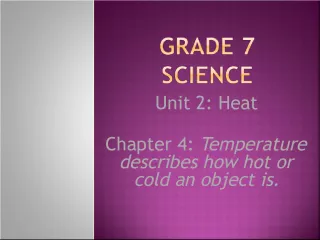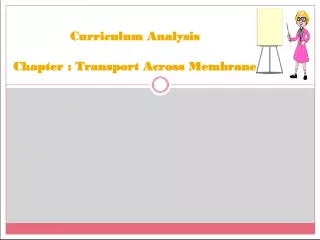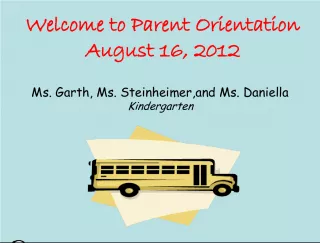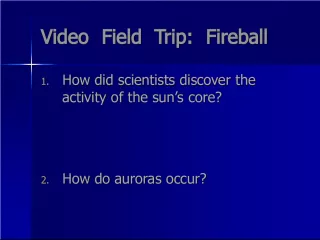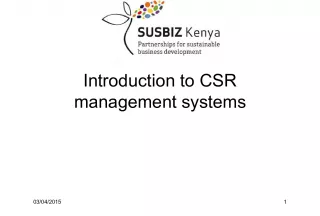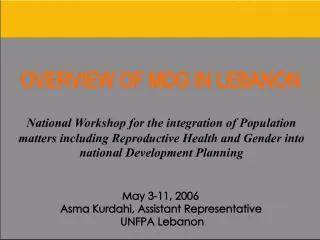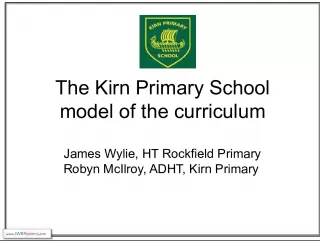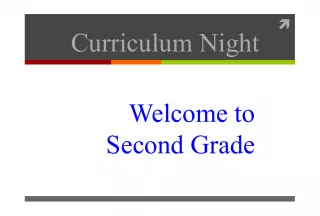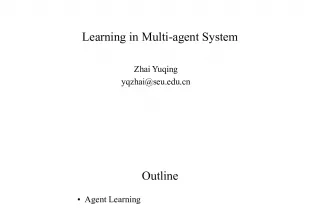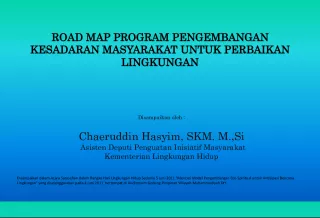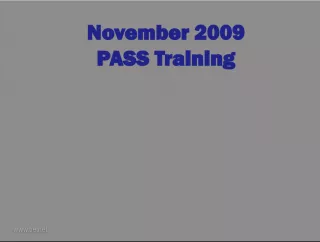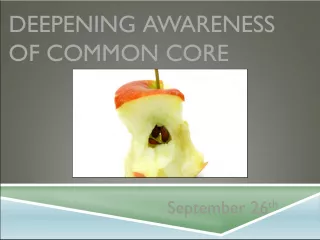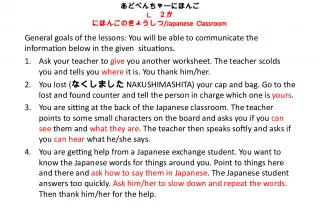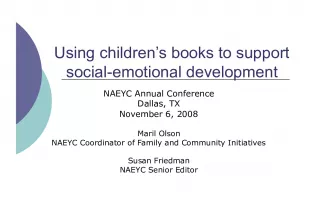Unwrapping the Standards: Developing Daily Learning Targets with Iowa Core Curriculum


Using Bloom's Taxonomy, this guide helps teachers refine lesson plans by putting standards into precise language, clarifying goals for student learning.
- Uploaded on | 3 Views
-
 tanika
tanika
About Unwrapping the Standards: Developing Daily Learning Targets with Iowa Core Curriculum
PowerPoint presentation about 'Unwrapping the Standards: Developing Daily Learning Targets with Iowa Core Curriculum'. This presentation describes the topic on Using Bloom's Taxonomy, this guide helps teachers refine lesson plans by putting standards into precise language, clarifying goals for student learning.. The key topics included in this slideshow are . Download this presentation absolutely free.
Presentation Transcript
Slide1BLOOM’S TAXONOMYAND UNWRAPPING A STANDARD Using the Iowa Core Curriculum standards to develop daily learning targets
Slide2THE STANDARDS DEFINE WHAT ALLSTUDENTS ARE EXPECTED TO KNOW AND BE ABLE TO DO, NOT HOW TEACHERS SHOULD TEACH.
Slide3WHY IS UNWRAPPING THE STANDARDSIMPORTANT? Unwrapping the standards helps us, as teachers, to put into words EXACTLY what we want our students to know and EXACTLY what we want our students to be able to do.
Slide4THE IOWA CORE STANDARDS HELPALIGN INSTRUCTION OVER TIME The Standards use individual grade levels in kindergarten through grade 8 to provide useful specificity; the Standards use two-year bands in grades 9–12 to allow schools, districts, and states flexibility in high school course design.
Slide5What is a standard? A learning target?Standard Definition: What we want students to be able to know and do at the end of any given time. Standards are provided by the state and derived from the National Standards. Learning Target Definition: These are statements of intended learning based on the standards. Learning targets are in student friendly language and are specific to the lesson for the day and directly connected to assessment. .
Slide6Example of a Standard vs. LearningTargets Science Standard: Science Standard: Use a model to illustrate the role of cellular division (mitosis) and differentiation in producing and maintaining complex organisms. Science Learning Targets: (Scaffold for differentiation) I can draw a labeled diagram illustrating the steps of mitosis. I can create a three dimensional model illustrating the steps of mitosis. I can create a computer animation illustrating the steps of mitosis.
Slide7THE NEXT SLIDE GIVES ANEXAMPLE OF ALIGNMENT, K-12 This example is from Language Arts
Slide8StandardGrade(s) 3 4 5 6 7 8 9–10 11–12 L.3.1f. Ensure subject-verb and pronoun-antecedent agreement. L.3.3a. Choose words and phrases for effect. L.4.1f. Produce complete sentences, recognizing and correcting inappropriate fragments and run-ons. L.4.1g. Correctly use frequently confused words (e.g., to/too/two; there/their). L.4.3a. Choose words and phrases to convey ideas precisely. * L.4.3b. Choose punctuation for effect. L.5.1d. Recognize and correct inappropriate shifts in verb tense. L.5.2a. Use punctuation to separate items in a series. † L.6.1c. Recognize and correct inappropriate shifts in pronoun number and person. L.6.1d. Recognize and correct vague pronouns (i.e., ones with unclear or ambiguous antecedents). L.6.1e. Recognize variations from standard English in their own and others’ writing and speaking, and identify and use strategies to improve expression in conventional language. L.6.2a. Use punctuation (commas, parentheses, dashes) to set off nonrestrictive/parenthetical elements. L.6.3a. Vary sentence patterns for meaning, reader/listener interest, and style. ‡ L.6.3b. Maintain consistency in style and tone. L.7.1c. Place phrases and clauses within a sentence, recognizing and correcting misplaced and dangling modifiers. L.7.3a. Choose language that expresses ideas precisely and concisely, recognizing and eliminating wordiness and redundancy. L.8.1d. Recognize and correct inappropriate shifts in verb voice and mood. L.9–10.1a. Use parallel structure. Language Progressive Skills, by Grade The following skills, marked with an asterisk (*) in Language standards 1–3, are particularly likely to require continued attention in higher grades as they are applied to increasingly sophisticated writing and speaking.
Slide9NOW, LET’S “UNWRAP” A STANDARD https://www.educateiowa.gov/ This website provides the Iowa Core Standards we will use today and you will use in the future.
Slide10EXAMPLE OF AN IOWA CORESTANDARD Standard WHST.9-10.4 (9 th and 10 th Grade History, Social Studies) Produce clear and coherent writing in which the development, organization, and style are appropriate to task, purpose, and audience.
Slide11UNDERLINE THE NOUNS & CIRCLE THE VERBS Produce clear and coherent writing in which the development , organization , and style are appropriate to task , purpose , and audience .
Slide12UNWRAPPING THE STANDARD The underlined nouns = What Students Need to Know The circled verbs = What Students Need to Be Able to Do
Slide13What we want them to know are CONCEPTS.What we want them to do are SKILLS.
Slide14List the nouns (these are the concepts being taught) writing development organization style task purpose audience
Slide15Note any criteria for the assignment. (thewords in brackets above) Produce clear and coherent writing in which the development, organization, and style are [appropriate to task, purpose, and audience.]
Slide16Take note of content vocabularywriting development organization style task purpose audience writing, development, organization, style, task, purpose, audience
Slide17List verbs. These are the skills and/or tasksthe students should be able to do. writing development organization style task purpose audience writing, development, organization, style, task, purpose, audience Produce
Slide18WRITE STUDENT LEARNINGTARGETS IN THE FOLLOWING STUDENT FRIENDLY FORMAT (I CAN…) I can develop ideas, details, and/or evidence for a specific writing task, based on the purpose and audience. (SYNTHESIS, CREATE) I can organize my writing based on a specific task, purpose, and audience. (SYNTHESIS, EVALUATING) I can determine and use appropriate writing style and structure (e.g., diction, voice, sentence structure) based on the specific task, purpose, and audience . ( ANALYSIS, APPLY)
Slide19Write student friendly learning targetswriting development organization style task purpose audience Produce writing, development, organization, style, task, purpose, audience I I can organize my writing based on a specific task, purpose , and audience. my writing based on a specific task, purpose, and
Slide20STUDENT PRODUCTS The learner will produce clear and coherent writing on a variety of topics using organization and style appropriate to task, purpose, and audience.
Slide21AN EXAMPLE FROM MATHl Locations Spatial relationships Geometry Quadratic equations functions Inequalities plane Specifies Describes Using Graphs I can graph using a table of values. I can identify equations given a graph. I can identify a graph given an equation. equations, graph, values, geometry, functions, inequalities, plane, spatial
Slide22S3.0 THE STUDENT WILL DEMONSTRATE ANUNDERSTANDING OF GEOMETRY. Specifies locations and describes spatial relationships using coordinate geometry B 3.1Graphs quadratic equations/functions and inequalities on a coordinate plane Examples of learning targets in student friendly language: I can graph using a table of values. (Applying) I can identify equations given a graph. (Understanding) I can identify a graph given an equation. (Understanding)
Slide23USE BLOOM’S TAXONOMY TO HELPWRITE YOUR LEARNING TARGETS
Slide24Next…Evaluate your learning targets accordingto Bloom’s Taxonomy writing development organization style task purpose audience Produce writing, development, organization, style, task, purpose, audience I I can organize my writing based on a specific task, purpose , and audience. my writing based on a specific task, purpose, and
Slide25QUESTIONING TECHNIQUESBASED ON BLOOM’S TAXONOMY
Slide26HELPFUL VERB CHART FORWRITING LEARNING TARGETS
Slide27NORMAN WEBB'S DEPTH OF KNOWLEDGE LEVELS CAN BE HELPFUL TO TEACHERS. DEPTH OF KNOWLEDGE (DOK) CATEGORIZES TASKS ACCORDING TO THE COMPLEXITY OF THINKING REQUIRED TO SUCCESSFULLY COMPLETE THEM http://static.pdesas.org/content/documents/M1- Slide_19_DOK_Wheel_Slide.pdf http://facstaff.wcer.wisc.edu/normw/All%20content%20areas%20% 20DOK%20levels%2032802.pdf http://www.stancoe.org/SCOE/iss/common_core/overview/overvie w_depth_of_knowledge/dok_arts.pdf http://svesd.net/files/DOK_Question_Stems.pdf http://schools.nyc.gov/Academics/CommonCoreLibrary/Profession alLearning/DOK/default.htm
Slide28BLOOM’S DIGITAL TAXONOMY
Slide29DIGITAL SUGGESTIONS FOR THE LEVELSOF BLOOM’S TAXONOMY
Slide30DIGITAL SUGGESTIONS FOR THE LEVELS OFBLOOM’S TAXONOMY Teacher Tap DataAnalysis By Data Evaluation Systems Data Analysis By Data Evaluation Systems Smart Tools Altimeter
